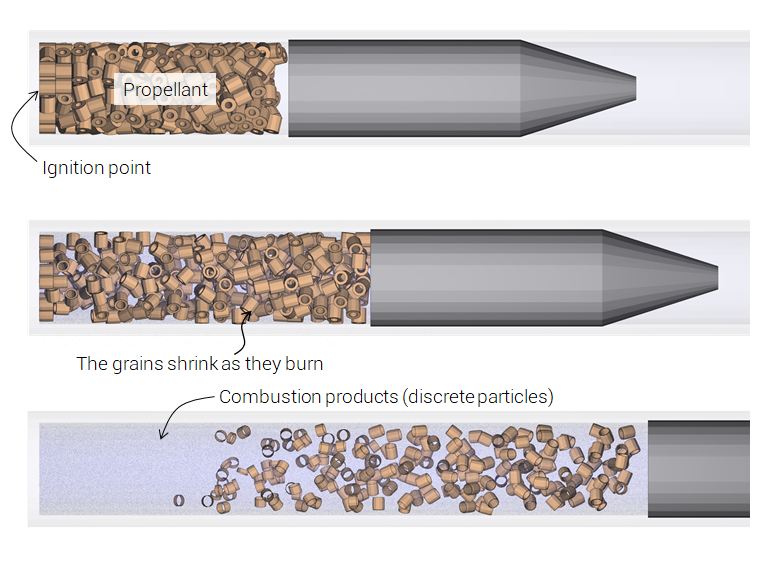MAT_POWDER_BURN
Material properties
Beta command
This command is in the beta stage and the format may change over time.
"Optional title"
mid, $\rho$, $E$, $\nu$, did
$C_v$, $\gamma$, $e_0$, $v$, fid, $T_i$, $p_i$
local, $A$, $B$, $n$
Parameter definition
Description
This material command is used to model unburned propellant as rigid or elasto-plastic grains and its combustion products as discrete particles. The grains are assumed rigid, unless $E \gt 0$.
If $E \gt 0$ then the flow stress is defined as:
$\displaystyle{ \sigma_y = A + B(\varepsilon_{eff}^p)^n }$
By default (local=0) the burn rate is uniform for each grain. That is, the average pressure and temperature is calculated and used for all element faces on the grain. If local=1, then the local pressure and temperature defines the local burn rate for each individual element face.
The command needs to be combined with POWDER_BURN_IGNITE and PARTICLE_DOMAIN. POWDER_BURN_IGNITE is used to describe the ignition location and PARTICLE_DOMAIN defines gas-structure contacts and limits the region in space where the combustion products (discrete particles) are modeled. The number of discrete particles that are used to model the combustion products are specified in the PART command (parameter $N_{perode}$).
Example
Internal ballistics (burning propellant)
Propellant grains burning in a simple internal ballistics demonstration model.

